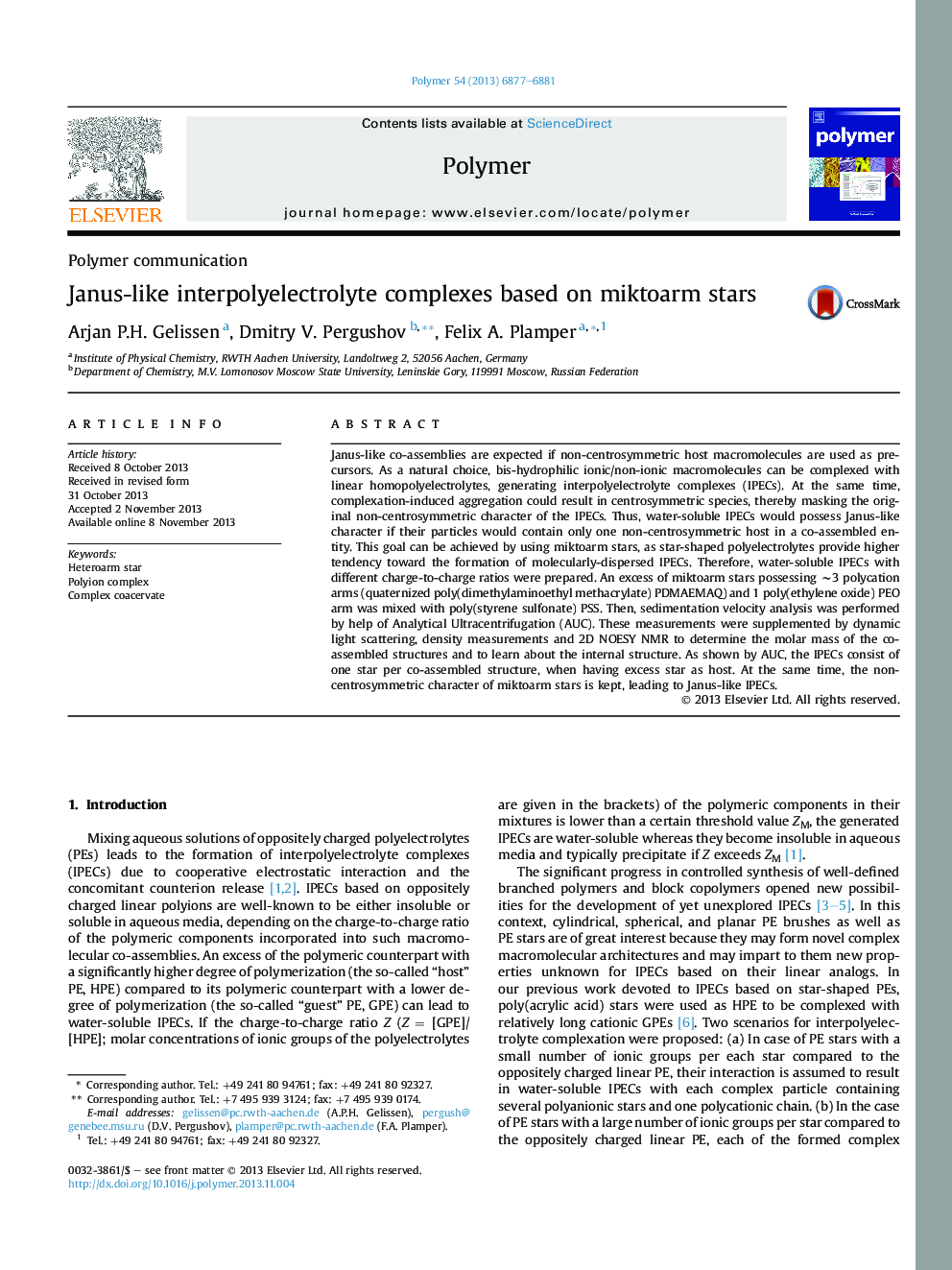| Article ID | Journal | Published Year | Pages | File Type |
|---|---|---|---|---|
| 5181248 | Polymer | 2013 | 5 Pages |
Janus-like co-assemblies are expected if non-centrosymmetric host macromolecules are used as precursors. As a natural choice, bis-hydrophilic ionic/non-ionic macromolecules can be complexed with linear homopolyelectrolytes, generating interpolyelectrolyte complexes (IPECs). At the same time, complexation-induced aggregation could result in centrosymmetric species, thereby masking the original non-centrosymmetric character of the IPECs. Thus, water-soluble IPECs would possess Janus-like character if their particles would contain only one non-centrosymmetric host in a co-assembled entity. This goal can be achieved by using miktoarm stars, as star-shaped polyelectrolytes provide higher tendency toward the formation of molecularly-dispersed IPECs. Therefore, water-soluble IPECs with different charge-to-charge ratios were prepared. An excess of miktoarm stars possessing â¼3 polycation arms (quaternized poly(dimethylaminoethyl methacrylate) PDMAEMAQ) and 1 poly(ethylene oxide) PEO arm was mixed with poly(styrene sulfonate) PSS. Then, sedimentation velocity analysis was performed by help of Analytical Ultracentrifugation (AUC). These measurements were supplemented by dynamic light scattering, density measurements and 2D NOESY NMR to determine the molar mass of the co-assembled structures and to learn about the internal structure. As shown by AUC, the IPECs consist of one star per co-assembled structure, when having excess star as host. At the same time, the non-centrosymmetric character of miktoarm stars is kept, leading to Janus-like IPECs.
Graphical abstractDownload full-size image
